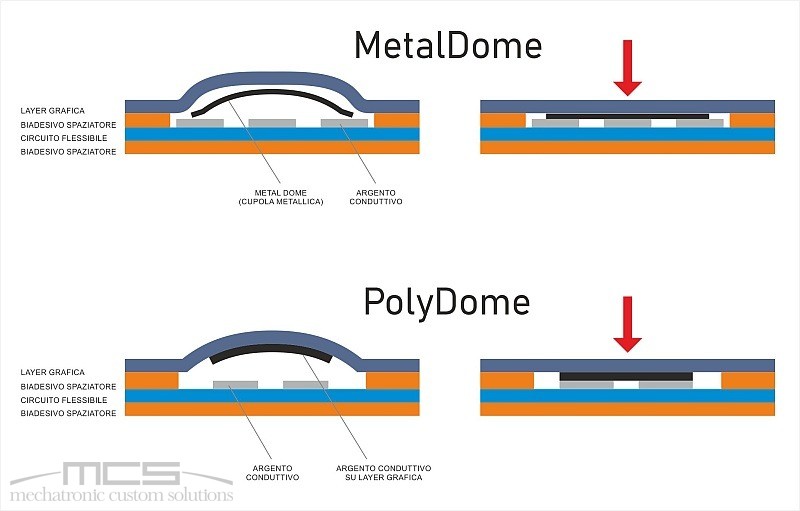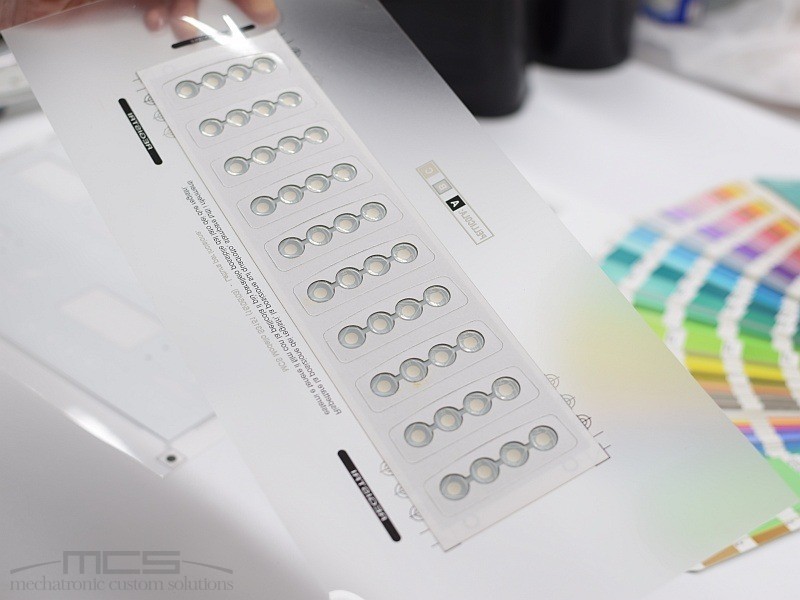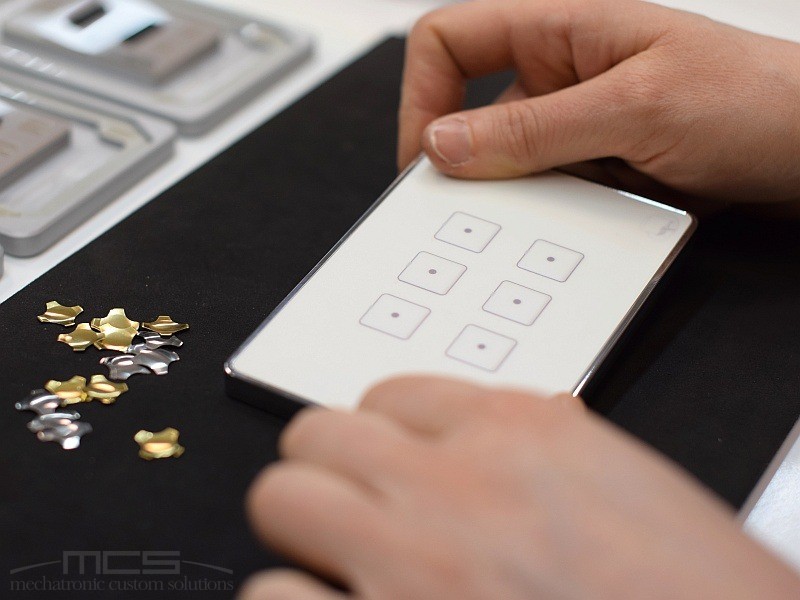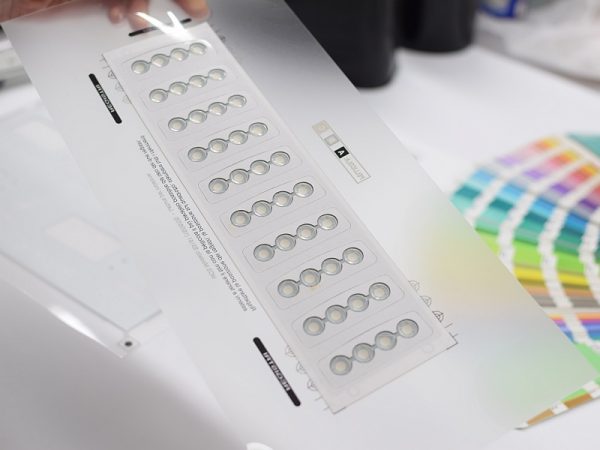MetalDome and Polydome are compound terms, with the word “dome” appearing in both, meaning cupula. As many of you may know, the two terms identify two types of keys (push buttons) for membrane switches.
A membrane switch is made in layers. The first is that of polyester graphics (originally a transparent material that is printed on the inner surface). Then there is usually a double-sided spacer adhesive, and then the layer of the flexible circuit.
Finally, there is a final adhesive layer that is used to adhere the membrane switch to the target substrate. In close proximity of the button then come two signals, which must be “shorted” to close the contact and then activate the required function.

Therefore, the connection can be closed in two ways:
- In membrane switch with PolyDome, a silver-based conductive ink “dot” is printed inside the graphic layer using a silkscreen process, the same silver used for the flexible circuit tracks. By pressing a button squeezes the polyester previously deep-drawn by heat-forming process, the conductive stamp then short-circuits the two signals, closing the contact.
- In membrane switch with MetalDome, the contact closure is through a metal dome, which is a nickel-plated or gold-plated steel component that is placed between the graphics layer and the circuit layer. When the key is pressed, it is this metal element that returns a clear and sharp “click effect.”
It is important to underline that the reliability of the two keyboard types is the same.
Features and advantages of PolyDome membrane switches
The PolyDome typology offers the possibility of making membrane switches with a large number of keys at a lower cost than the MetalDome typology, which is affected by the insertion of the metal component.
Membrane switches with PolyDome ensure a softer and therefore functionally and ergonomically advantageous actuation for certain types of activities.

“We used this type,” points out Alessandro Vignaga, administrator and sales manager, “for a medical application in which an operator had to press a button positioned on a handpiece with his index finger for a prolonged time.”
However, even in this type of membrane switch, the hardness of a key can be “adjusted” by using a thicker or thinner polyester (150 or 200 μm) and/or by using different molds to thermoform the polyester. With the PolyDome switch, the key thermoforming is always dome-shaped, while with the MetalDome, the shape of the key can be customized.
In summary, the advantages of PolyDome membrane switches are:
- smoother drive while maintaining a clear “click effect.”
- Making switches with a high key density;
- proportionately lower cost than the MetalDome type.
Features and advantages of switches with MetalDome

When you need a clear “click effect” and a “perception of resistance” to pressing the keys, it is preferable to use a MetalDome switches.
“We recommend this solution when the product is used outdoors – for example on construction equipment, agriculture, waste collection, etc. – perhaps wearing work gloves that actually reduce the perception of pressure».
In membrane switches with MetalDome, key hardness is defined by the weight of the metal dome, which is available in different sizes and types (280 gr, 350 gr, 450 gr, etc.). Finally, the thermoformed key can be shaped, allowing for various shapes: rectangular, oblong, triangular, trapezoidal, etc.
In summary, MetalDome membrane switches:
- are preferable when looking for that “click” effect, which is useful in certain work contexts;
- allow greater customization of the shape and size of the keys.
- are also available with gold coating for switches with very low levels of electrical resistance.
Hi-Click® technology: the click effect for PolyDome switches.
“As always before recommending one type over another,” concludes Alessandro Vignaga, “we conduct a careful analysis based on scope of application, cost-effectiveness, and last but not least, customer tastes. Some people become attached to a certain technology and remain loyal to it over time. Others chose by trying some of our samples.
Obviously, our goal is to meet the customer’s needs. For this reason, we developed Hi-Click® technology by making PolyDome keypress molds in-house, with a type of shape that returns a distinct “click” when the key is pressed, as if it were a MetalDome type switch. It has not been easy, but the advantages have repaid us for the effort, because in this way we respond to a qualitative demand that not everyone can meet, often setting us apart from our competitors.”
Text edited by MCS Marketing Office

